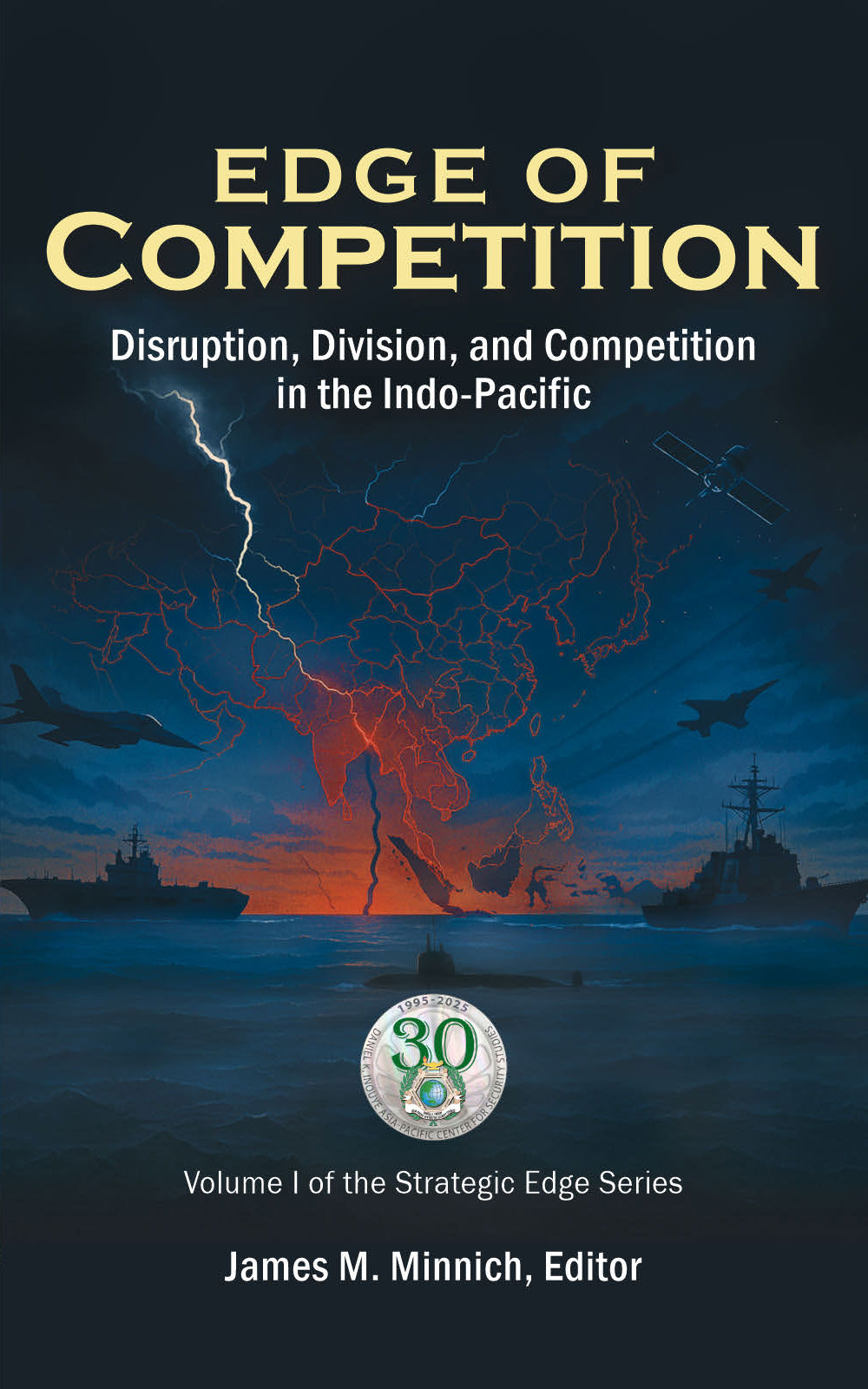Chapter 14
Safeguarding India’s Submarine Cables
Divya Rai
Connectivity is the new geography
— Parag Khanna, Connectography, 2016
Introduction
In the Indo-Pacific’s evolving strategic landscape, the contest for digital dominance is playing out beneath the sea. Submarine cables—carrying 95% of the world’s international data—form the unseen backbone of the global economy, financial systems, and military communications. As states seek to control information flows and assert influence in the digital domain, these cables have emerged as critical infrastructure and strategic targets.
India stands at the center of this high-stakes environment. Its geographic position in the Indian Ocean Region is at the crossroads of vital global data routes, linking Europe, Southeast Asia, and the Middle East. India’s ambitions to become a global digital hub are accelerating through projects such as the 2Africa Pearls, India-Asia-Express (IAX), and India-Europe-Express (IEX) submarine cable systems. These initiatives will significantly expand its bandwidth capacity and deepen its integration into the world’s digital economy. But with this opportunity comes heightened vulnerability—and responsibility.
Recent sabotage incidents—from the Nord Stream pipeline attacks to cable disruptions in the Red Sea—underscore the emergence of undersea infrastructure as a new frontier in geopolitical competition. A growing concern in the strategic landscape is the potential for seabed warfare. In particular, the weaponization of seabed assets, including by state-backed actors operating in legal gray zones, highlights the fragility of global connectivity. India’s limited repair capabilities and reliance on foreign-owned infrastructure expose a critical gap at a time when secure, resilient communications are paramount to national power.
The chapter explores the strategic importance of India’s submarine cable network within the broader context of Indo-Pacific competition. It examines the composition and vulnerabilities of these systems, identifying gaps in international and domestic legal protections, and evaluates India’s current infrastructure posture and the importance of Quad initiatives on cable repair partnerships. Most importantly, it outlines a roadmap for India to transform its submarine cable ecosystem—from a soft target to a pillar of strategic advantage. Through legal reform, alliance coordination under its SAGAR initiatives, and domestic capability development, India can assert itself as a rule-shaper in securing the Indo-Pacific’s digital arteries.








